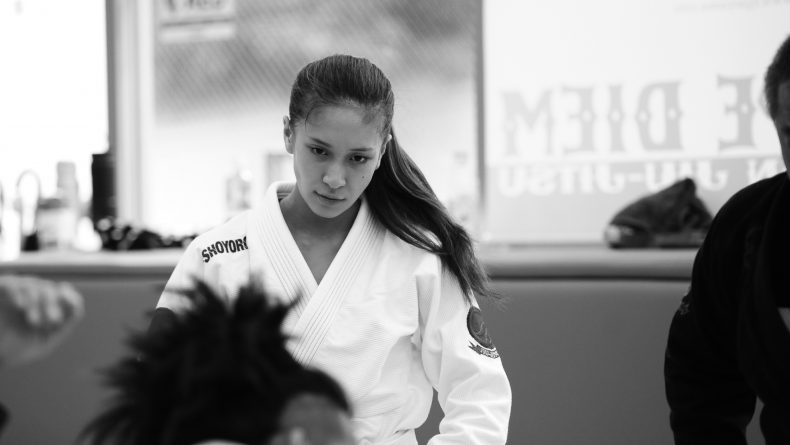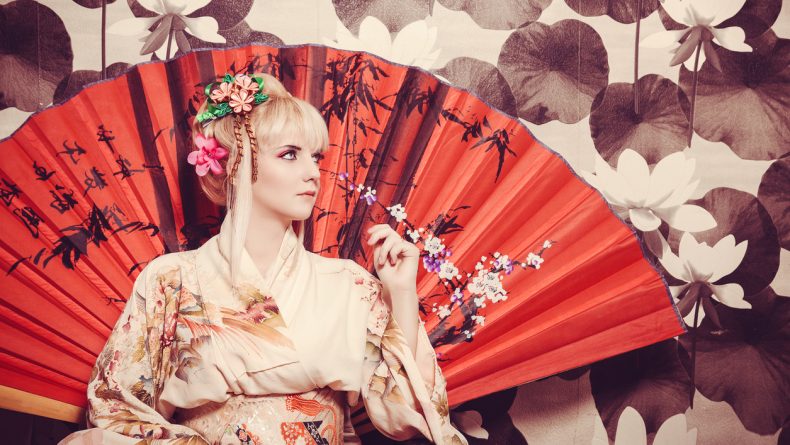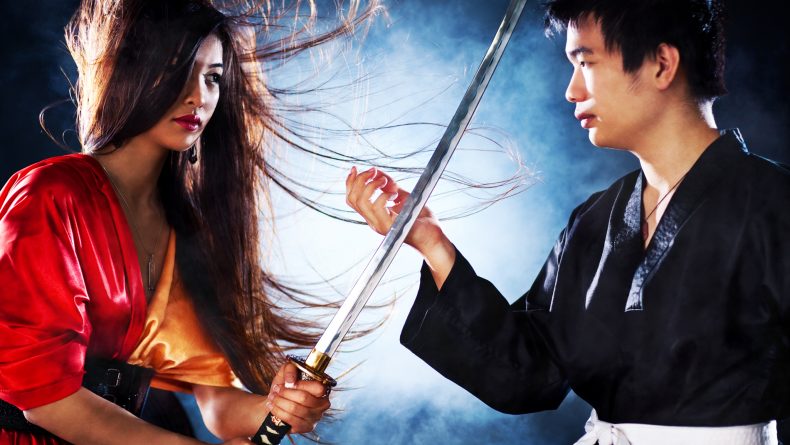Tokyo Fight Club: Judo
A Guide To Mastering Integrity, Dedication And Mutual Respect
Making my way into the depths of Japanese martial arts, my next stop in my series was Judo. Following Brazilian Jiu Jitsu, I was under the impression that, really, I could master anything similar. How wrong I was.
What I did not consider was the strict, unwavering traditions that judo entails: from the bow when you enter the dojo (gym), to the way you greet and leave your instructor. In particular, the dojo I went to focuses on the founding principles of traditional Japanese martial arts: integrity, dedication, and mutual respect. Of course these are things that should be considered in all sports, but this is valued even more so in judo.
Well-known as an Olympic sport, judo involves grappling and throwing techniques, and much like Brazilian jiu jitsu, is designed so that no matter your constitution, weight or size, you can use your body against your opponent.
Practice comprises both kata (prearranged forms) and randori (sparring). Techniques range through throwing, pins, joint locks and chokes, some of which I had encountered in my Brazilian jiu jitsu (BJJ) class. Both judo and BJJ derive from their mother martial art, Jujutsu, while common principles shared with both jujutsu and aikido include flexibility, balance and posture.
A Day At The Dojo
Arriving at the American Embassy Judo Club, Lance Gatling, Nihon jujutsu enshi 4-dan, greeted me outside the compound.
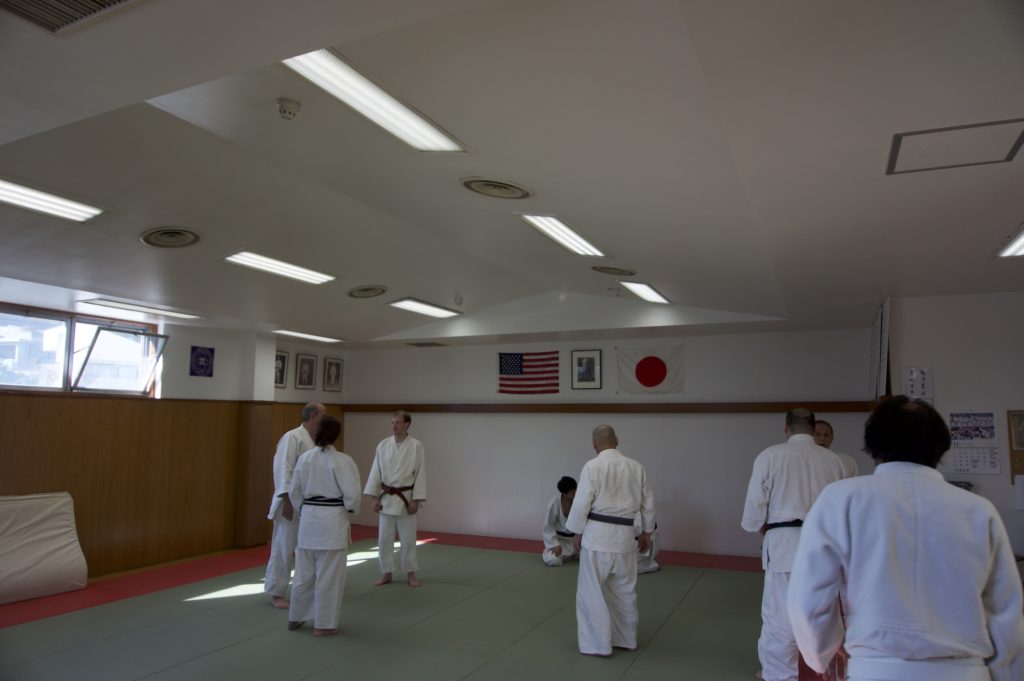 © Photo by U.S. Embassy Judo Club
© Photo by U.S. Embassy Judo Club
To say I was not intimidated when I walked into the children’s class that was on before my session would be a lie. Six-year-olds were deftly swiping 11-years-olds to the floor completely effortless. I looked on in awe.
I began the class in all the wrong ways. Not only did I put my gi (training clothes) on wrong and tied my belt incorrectly, but I also proceeded to forget to bow on my way in. Luckily, Gatling was on hand to instruct and support.
We assembled in a line, or in my case stumbled (note that this line was ranked from lowest belt to highest), bowed and then began with a standard warm up and some deep stretching. The class was run by Natori Hiroto, while Gatling sensei and I stayed near the back (mostly so I didn’t injure anyone, I’m sure).
During the class, which was a mixture of both English and Japanese, I followed my own advice: just imitate what everyone else is doing around you.
And then the falling began all over again.
Like in BJJ, learning how to fall is crucial. Sometimes it’s better to fall than to continue fighting. I really did think I had mastered it in BJJ, but the precision with which Gatling re-instructed me, told me that I wasn’t quite there yet.
“It’s an excessive workout, and a great combination of cardio and anaerobic exercise, which you don’t get with a lot of things,” Lily Williams, one of the two women in my class and a black belt, explained to me.
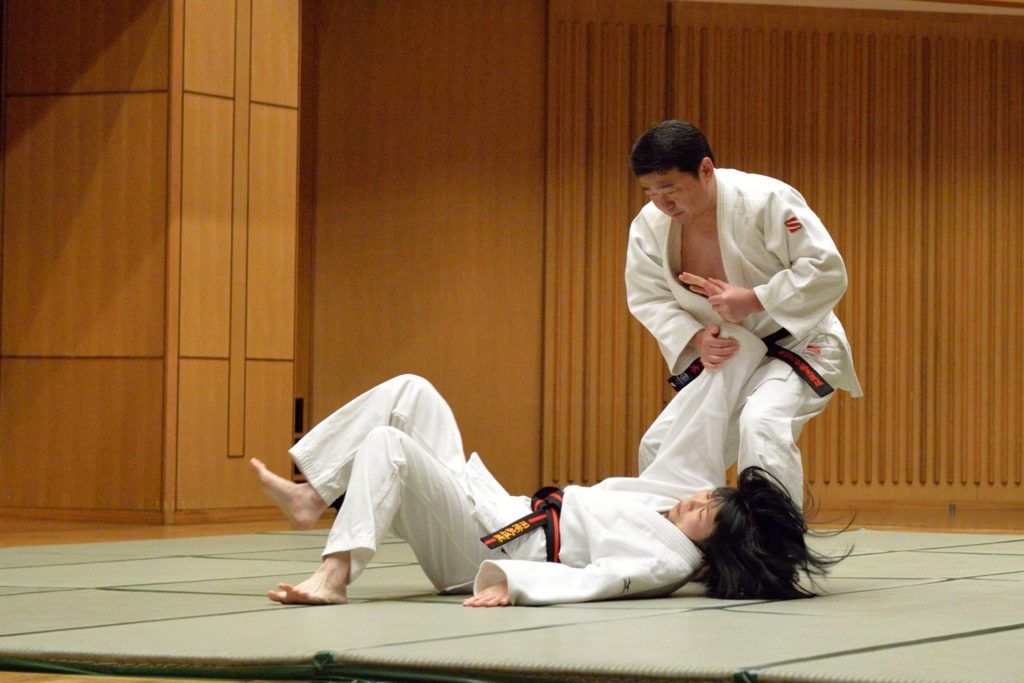 © Photo by U.S. Embassy Judo Club
© Photo by U.S. Embassy Judo Club
She told me how she used to weigh herself before and after class, noticing a substantial weight gain after a session purely because of the sweat-soaked gi. I could definitely see why when I watched everyone spar.
Williams gave me some sound advice: “Don’t think about it as a martial art, and that you’re going to be Chuck Norris by the end of it.” A good way of looking at it, especially if you are nervous, is that it is just a less naked version of wrestling.
“A lot of things are reliant on your partner following the rules,” she added. Well then, there’s hope that it might not be all me if something goes wrong.
Don’t think about it as a martial art, and that you’re going to be Chuck Norris by the end of it.
If you’re a dancer, judo might be something that you bond with quickly. The footwork and movement required with your partner is both precise and sort-of rhythmic. Or, perhaps that was just the repetition of falling to the ground and landing, somehow on my side. And if you’re a parent — this is one sport where both you and your child can work toward something and both be around each other in a family-friendly dojo.
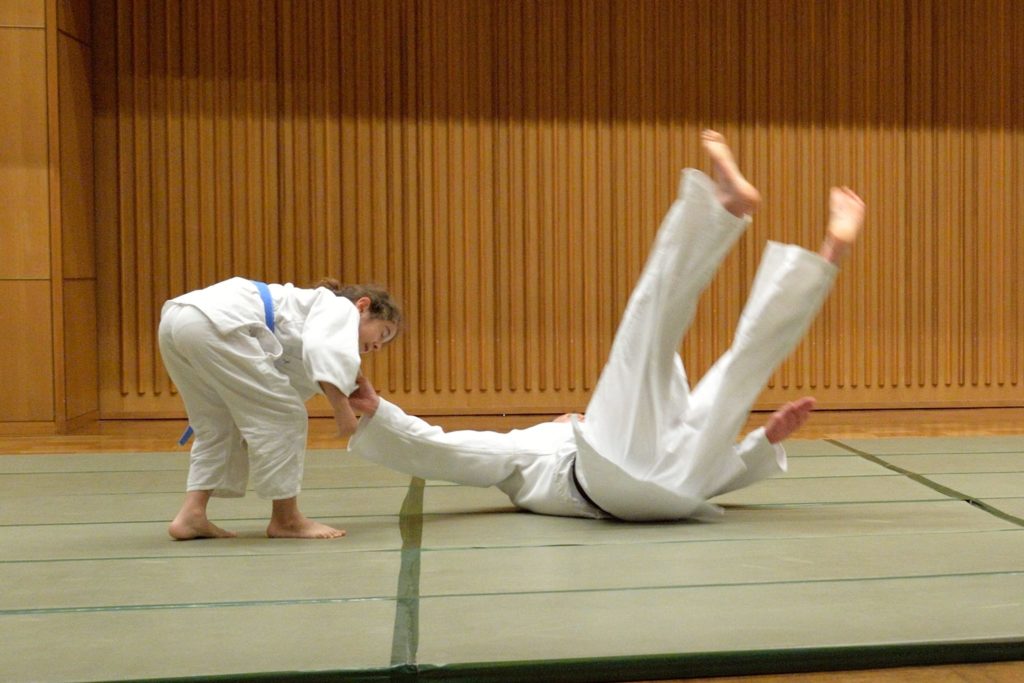 © Photo by U.S. Embassy Judo Club
© Photo by U.S. Embassy Judo Club
Madeleine Stewart does judo with her daughter and both have gained their black belts. And she is now second dan black belt.
“It teaches children agility and respect,” she said, advising that it’s best for children to start at around the age of 6, rather than too early, when they are still developing strength in their legs, coordination and their ability to follow instruction.
“I like the discipline and the camaraderie,” she added. This is something I also noticed in the dojo: there was a sense that no matter what mistakes you made, everyone around you was understanding and ready to help.
What I discovered through judo was that it consolidated a lot of my understanding of martial arts. It isn’t just about your physical abilities, it’s also about the deeper principles behind the sport. And despite the facts that you are aiming to put someone off balance, throw them to the floor, aim for their joints and even their throat, in practice you’re in safe hands in the dojo.
It isn’t just about your physical abilities, it’s also about the deeper principles behind the sport.
The dojo students at the U.S. Embassy Judo dojo range from 5-years-old to almost 70-years-old, from nearly a dozen countries and from beginners to masters with decades of experience. And along with Gatling and Hiroto, there are two other high ranking Japanese Judo sensei.
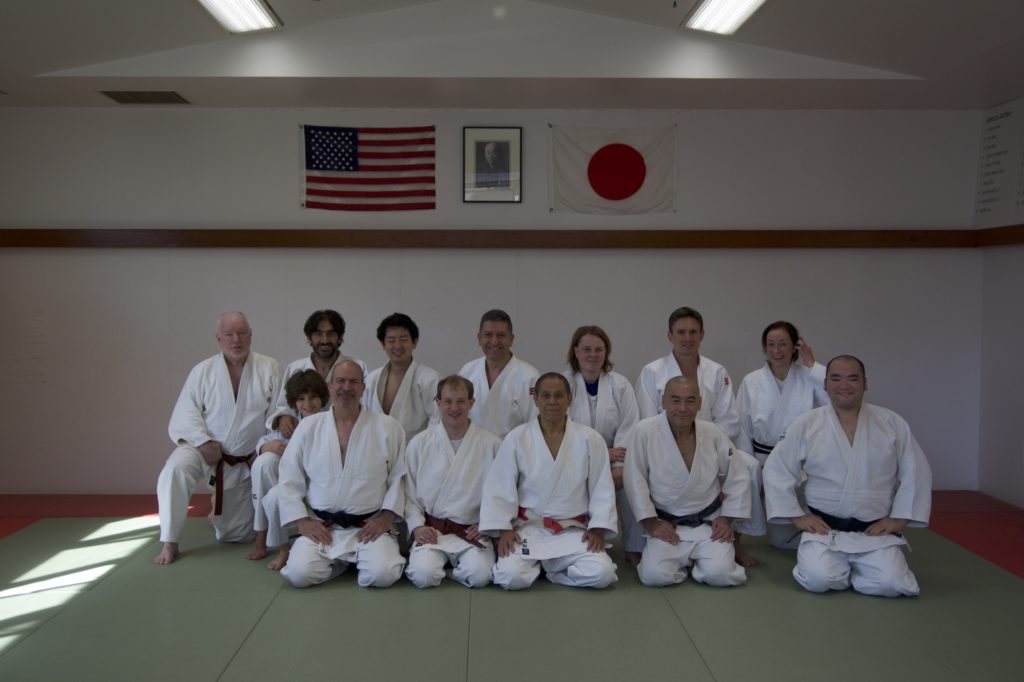 © Photo by U.S. Embassy Judo Club
© Photo by U.S. Embassy Judo Club
Despite this being the trickiest martial art I have done so far, it was also one of the most enlightening. If you’re up for the challenge, I highly recommend it.
What to wear?
Like BJJ, wear a tight pair of shorts and a top underneath your gi. Keep the colors to black or white rather than pink. Some dojo will supply gi and belts, but others will require you to buy your own. I advise having a look on Amazon or, if you end up at the U.S. Embassy Judo Club, they have a shop where you can purchase one.
The Deets
Location: 5-minute walk from Roppongi Crossing
Reservations: Lance Gatling, gatling@usejc.com
In the Savvy “Tokyo Fight Club” series, Maxine Cheyney heads to some local martial arts gyms to get fighting fit, release some stress and work on her straight kick. If you’ve wanted to up your fitness and self-confidence as well as learn how to throw (or block) a punch, Maxine will let you know what to expect in each discipline. Following her kickboxing, Krav Maga and Brazilian jiu jitsu sessions, she will be exploring more traditional Japanese sport in her future articles.












